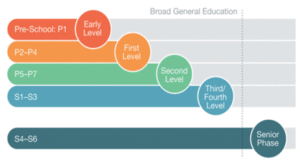At St Helen’s, pupils are continuously assessed in an informal way as part of the daily class routine. A wide range of different assessment strategies are used to encourage pupils to recognise their own strengths and areas for development.
In addition to this, at different points throughout the year, standardised assessments may be used to help teachers assess pupil progress and to identify any strengths and diagnose any barriers to learning.
Parents Evening
Parents are invited to attend parents evenings in Term 2 (Oct – Dec) and Term 4 (Apr – Jun) to discuss their child’s progress and agreed targets set.
Final Reports
All parents will receive a written school report in Term 4 each year. This will indicate pupil’s progress in all areas of the curriculum as well as general comments regarding behaviour/effort.
Snapshot Week
Each term, parents will be invited to explore their child’s progress and current learning through ‘Snapshot Week’. During this week, all work completed in class is within the children’s snapshot jotter. As the name suggests, it provides parents/guardians with a ‘snapshot’ of what their child is learning about in class, as well as providing an opportunity to see teacher feedback and pupil progress.
Personal Learning Plans (PLPs)
In St Helen’s all school children will have a Personal Learning Plan. This will be sent home to you twice over the session, first in October and then later in January. There will be no homework issued that week to allow time to read it through with your child. We believe that all children and young people should have frequent and regular opportunities to discuss their learning with an adult who knows them well and can act as a mentor, helping them to set appropriate goals for the next stages in learning. Children should be at the centre of this planning, as active participants in their learning and development.
Curriculum for Excellence is structured in levels to cover learning for children from 3 – 18. Throughout the time in Primary school children may progress through Early Level, First Level and Second Level. The path most children and young people are expected to follow through the levels reflects the stages of maturation of children and young people and the changing ways in which they engage with learning as they develop. The diagram below shows the five curriculum levels:
Some children and young people will start learning at these levels earlier and others later, depending upon individual needs and aptitudes. The framework is, however, designed to be flexible in order to permit careful planning for those with additional support needs, including those who, for example, have a learning difficulty and those who are particularly high attaining.
The Class Teacher will have discussions with your child about their learning in order to complete the Personal Learning Plan. As the year progresses the personal learning plan will outline the following information:
- An indication of the Curriculum for Excellence levels your child is working on in the 3 aspects of Literacy – Reading, Writing, and Listening and Talking
- An indication of the Curriculum for Excellence level your child is working on in Mathematics
- Specific targets that have been set for your child from Sep – Jan and February – June
- Feedback from the Class Teacher in November and March on your child’s progress with the targets set
In addition to the information on Literacy and Numeracy, the Personal Learning Plan also documents targets for Health and Wellbeing which along with Literacy and Numeracy, is a core area of the curriculum. Health and Wellbeing is a broad area which encompasses many strands of wellbeing – physical, social, emotional and mental. To help children and adults think about wellbeing, the SHANARRI indicators are used: Safe, Healthy, Achieving, Nurtured, Active, Responsible, Respected and Included. These are the 8 fundamental aspects of wellbeing that are necessary for a child or young person to reach their potential.
Enclosed in the Personal Learning Plan is an explanation of each of the SHANARRI indicators for parents to read and then talk about with their child. Parents are then asked to specify a Health and Wellbeing Target which will be focused on at home. Targets will be set from September to December and January to June. Parents and children will evaluate the progress with the targets set in November and March.
It is hoped this Personal Learning Plan will act as a tool for learning conversations with children to ensure each child feels like an active participant in their learning. The plan is designed to be a working document that can strengthen the home and school partnership.


